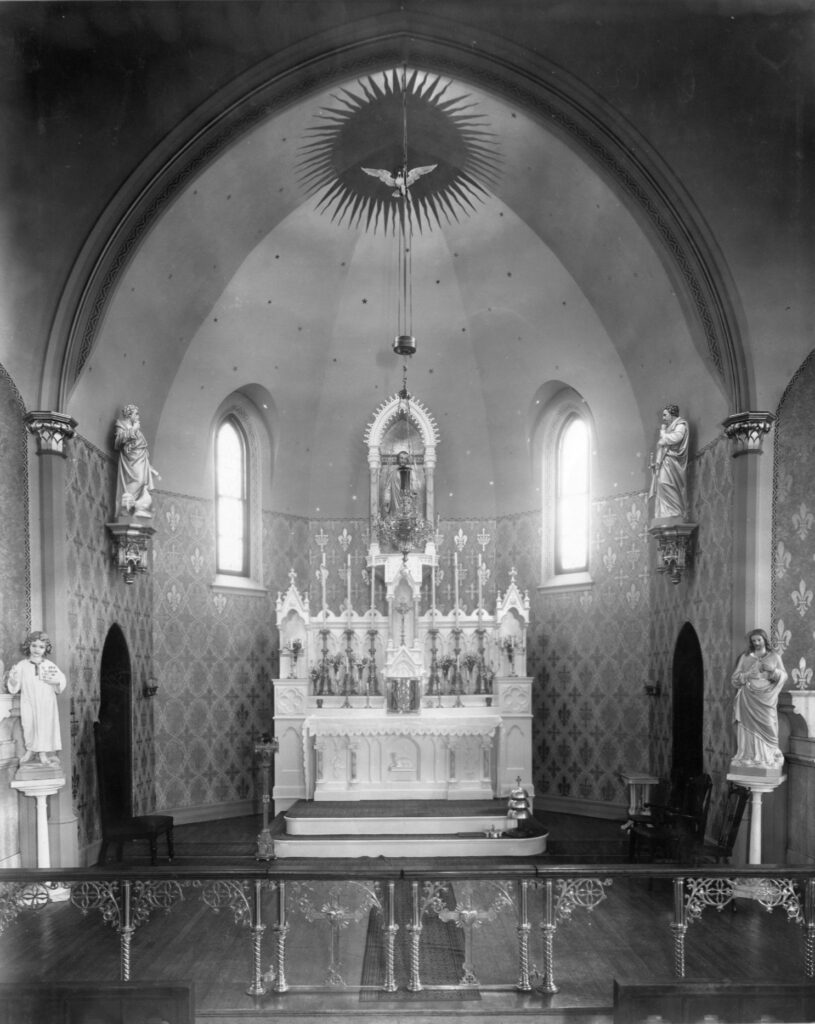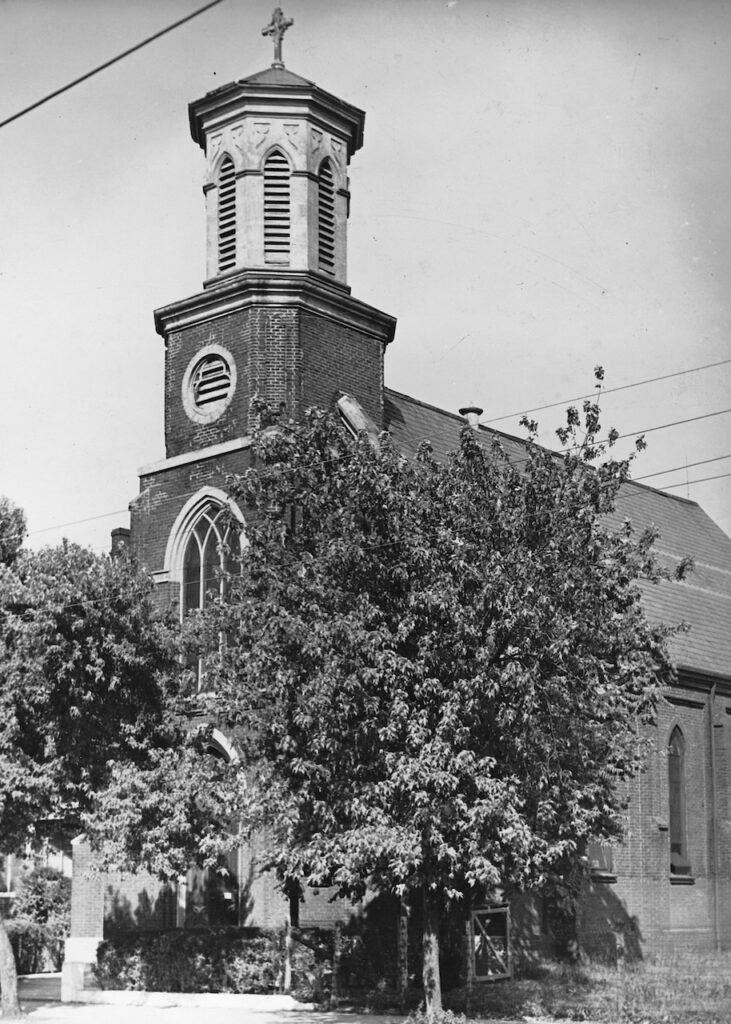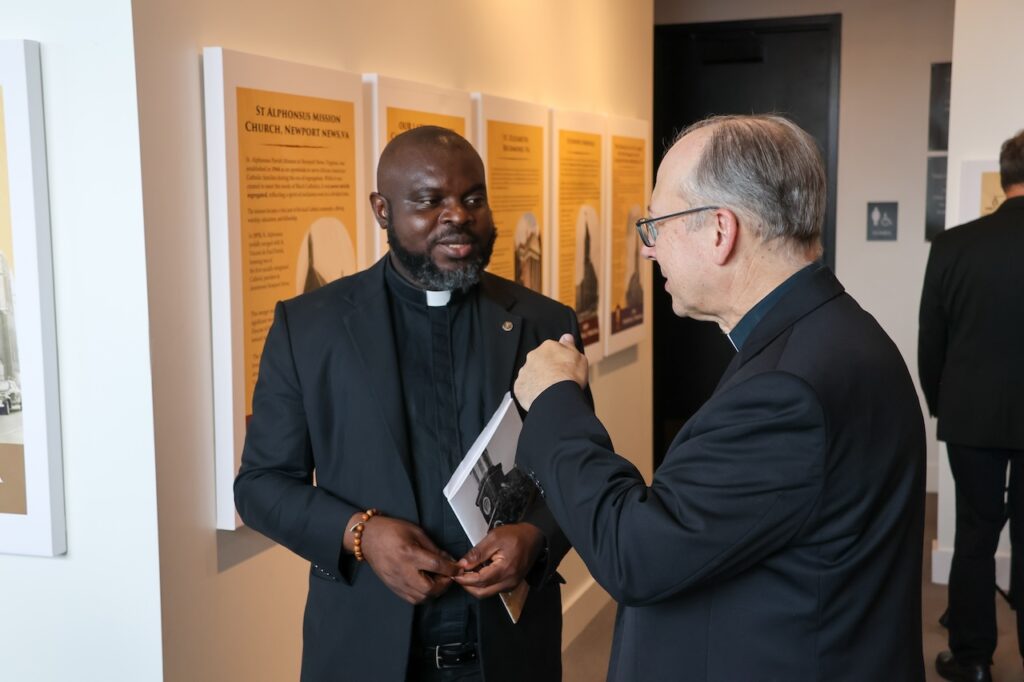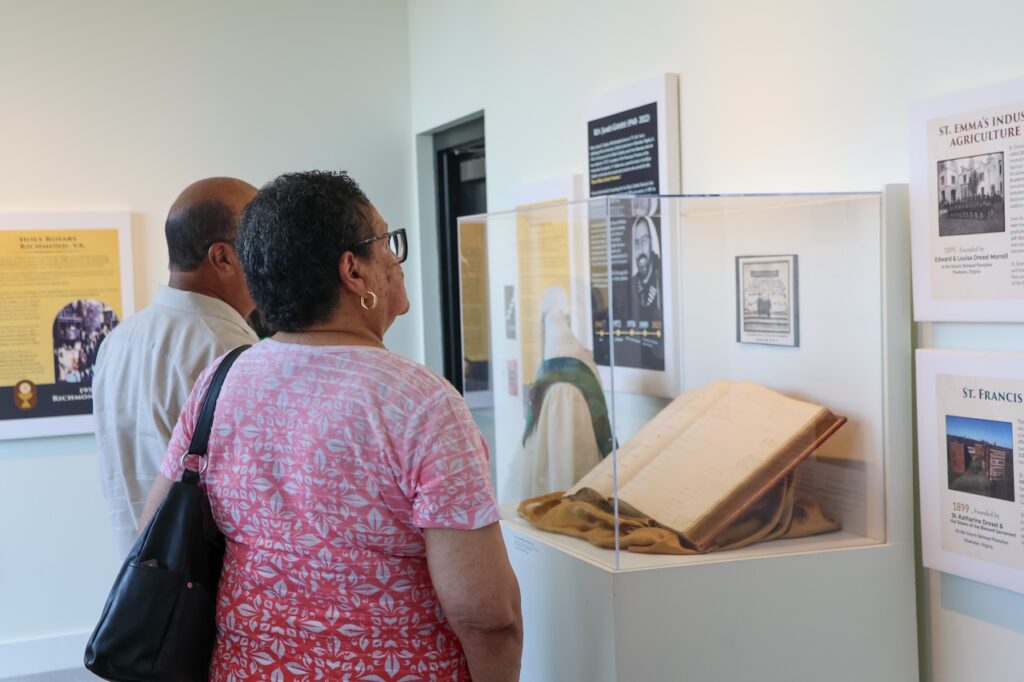When Mary Lauderdale moved to Richmond 30 years ago, there was a sign in her Fulton neighborhood for St. Augustine Catholic parish, but no church.
“I was walking around, looking all over for it,” said Lauderdale, who is now a parishioner at Holy Rosary, Richmond, and the director of collections at the Black History Museum & Cultural Center of Virginia in the Jackson Ward neighborhood of Richmond. “I even looked in the phone book.”
As it turned out, St. Augustine, Richmond, was one of many historically Black parishes closed during integration.
The story of St. Augustine and other Black parishes, schools, individuals and institutions in our diocese now features in an exhibit at the museum called “Faith and Resilience: The Legacy of Black Catholics in Virginia.” The exhibit opened July 11 with a ceremony featuring Father Tochi Iwuji, director of the diocesan Office for Black Catholics and pastor of Holy Rosary, and Bishop Barry C. Knestout.
The exhibit will be open through Nov. 22, when Father Iwuji will lead a Eucharistic procession from the museum to nearby St. Joseph’s Memorial Park.
The opening ceremony, said Holy Rosary parishioner Regina Chaney Walker, “was a great celebration. It was a chance to build community. I enjoyed meeting people from other areas, especially from the Basilica of St. Mary of the Immaculate Conception [in Norfolk]. We exchanged numbers, and I’m definitely following up with the people I met.”
Walker also emphasized the importance of recording history that was previously only a memory. For example, she contributed to part of the exhibit that features her uncle, Brother Martin de Porres Smith, a Redemptorist religious brother from our diocese.
“History is important,” said Walker. “These stories have to be documented so that they aren’t forgotten.”

In addition to stories about people like Brother Martin de Porres Smith, the exhibit features artifacts, photos, and information about historically Black churches and schools. For example, there is a registry from St. Emma Industrial and Agricultural Institute in Powhatan; there are choir robes from St. Gerard, Roanoke; and desks from St. Joseph School in Norfolk.
Bev Thornton, who grew up attending the now-closed St. Joseph, Richmond, which was in Jackson Ward, and the adjacent Van de Vyver School, came down from Chantilly for the opening ceremony.
“There was so much to see,” said Thornton.
Her home parish was closed while she was in college, and when she came back from school on holidays, it made her feel that “something was missing.” Two photos of St. Joseph in the exhibit brought back memories.
“The most impressive thing that got to me when I walked through … was the picture of the church,” said Thornton. “The altar was beautiful, beautiful, beautiful. That picture took me back to being a little kid.”
Lessons for today

Blessed Martin de Porres, Hampton; Holy Family Petersburg; St. Alphonsus, Newport News; St. Augustine, Richmond; St. Francis de Sales School, Powhatan; St. Gerard, Richmond; St. Joseph, Richmond; and St. Margaret Mary, Charlottesville – all historically Black parishes or schools – were closed during integration in the late 1960s. No historically white parishes or schools were closed for the purpose of integration.
Then-Bishop John J. Russell was a strong voice for desegregation in the Church and in the state of Virginia. A promise by the bishop to open a new St. Augustine parish in North Chesterfield was realized in 1973; that parish is still open today. But the parish closures caused heartache for many of the faithful.
“The intention was correct, but the results of that intention were not favorable,” said Father Iwuji. “What are the lessons? What is it that shouldn’t happen again? We have to think through our intentions, and look at in a broader picture, with analysis of the future in whatever choice we plan to do.”
Holy Rosary, Richmond; and St. Gerard, Roanoke, both historically Black parishes, remained open, and Black Catholic spirituality is part of the identity of both parishes to this day. St. Elizabeth, Richmond, has seen a demographic shift since the 1960s, and today, the parish is home to a vibrant African American community.
St. Joseph, Norfolk, and St. Emma Industrial and Agricultural Institute were closed for other reasons before integration.
Father Iwuji said that Black Catholic spirituality can be nurtured at the parish level in a way that is open to all.
“Black Catholic worship is dynamic, it’s vibrant,” he said. “Our Black cultural identity will be found in the music and the way we worship. But the basics of who we are as Catholics will not be forgotten.”
“You can retain and sustain the identity of the parish in a way that someone can still come and feel part of it,” he added.

Living history
Father Iwuji researched and wrote much of the information in the exhibit after speaking with living links to the past like Thornton and Walker.
Thornton, who now attends St. Joseph, Alexandria, in the Diocese of Arlington, is the daughter of R. A. Booker, a carpenter and construction contractor who designed the bell tower at St. Joseph’s Memorial Park.
At the opening ceremony, Thornton reconnected with old friends.
“I was tickled to see Msgr. Walter Barrett,” she said. “We were little kids together.”

Walker enjoyed sharing stories of Brother Martin de Porres Smith with old and new friends. Born in Richmond in 1940, the Redemptorist brother took on leadership roles in the congregation, and he represented North America at the 1991 General Chapter of the Redemptorists in Rome.
“Uncle was funny. He was a humorous person. He had this really witty kind of personality, and he had a soft voice, like my grandmother,” Walker said.
Like Thornton, Walker found an exhibit that took her back to her childhood: the photo and registry from St. Emma Industrial and Agricultural.
“Brother Martin’s dad went to St. Emma’s, and I remember as a child growing up with my grandparents, we’d go to St. Emma’s for celebrations,” said Walker. “That brought back some memories for me.”
Of any lingering divisions caused by the parish closures, Father Iwuji said he sees the exhibit as a sign of hope.
“Acknowledgment is the beginning of healing,” he said. “Acknowledging the bad, and the good – and also, to emphasize that even though the buildings have closed, the legacy lives in the people. It becomes an opportunity to express gratitude and move forward in hope and faith.”

